Windsurfing evolution can’t be attributed to windsurfing sails and boards alone. With the sport having reached maturity, looking back there’s so much that’s gone into what’s made it the activity you see today. Things have certainly changed over the years – for better and worse. But one thing remains: windsurfing is still as fun as it ever was. And there’s been lots of input from all corners, focusing on different aspects of what the sport is.

Flymount has certainly played a part in windsurfing’s evolution since the brand’s inception. A unique and innovative company with products aimed at capturing on water video on photos Flymount action cam mounts are a familiar part of windsurfing these days. So many riders who use GoPro or Insta360 cameras use Flymount as their chosen mounting system. A seemingly innocuous product at first Flymount action camera mounts are now entrenched in windsurfing and will forever be an integral part of sport. Especially if you keep in mind the world we live in where media is sharable across multiple platforms. All riders from everyday sailors to professionals can access social media and do so regularly. The ability to broadcast visual windsurf media is tangible. And Flymount continues to play its part.
But what’s the Flymount story? Where did Flymount begin and how did the company get to the point it has? Read on to find out as Flymount’s Joe and Imogen Knapton spill the beans.

Flymount Aero-130 Ultralight Wing and Kite Camera Mount

Flymount Aero-40 Ultralight Action Camera Mount

Flymount Original Action Camera Mount
This article contains the following sections –
Windsurfing beginnings.
When and where did you start windsurfing?
My first go on a windsurfer was during the summer of 1984 on Lake Coniston in the Lake District. My parents had been windsurfing for a few years, but I had been too small to try it up until then.
What was the first windsurfing kit you owned?
I had a ‘storm sail’ as my first bit of windsurf kit, with a homemade extra boom cut-out below the original one. I can’t remember the make.

On my next birthday though, I was given a 2.9m NeilPryde Garda sail, which I absolutely loved. We had a selection of classic boards during that time too: a Yipsi Wayler, a Tiga FunCup, an Alpha 160, and two custom boards – a massive egg-shaped one and a sinker.
How often were you sailing in those days?
With both parents windsurfing we went a lot. We’d get on the water pretty much every week, and holidays were always somewhere near water.
Who was your regular windsurfing crew back then?
We were part of the Nottingham Windsurf Club, based at Holme Pierrepont, and later on at Colwick Park. Both terrible places to sail, but a great bunch of people. I was the only kid windsurfing there at the time, but nobody treated me any differently.
Any funny stories you can share about your early days of windsurfing?
I drove down to Morocco in the early 2000s to go wave sailing. It was February, and I anticipated there being a bunch of people to windsurf and hang out with, but there was no one. I hadn’t secured any vehicle insurance before entering the country, and by the time I got down to the south it was really playing on my mind.
I drove down a dirt track near the beach to find somewhere to park up, but was told that I’d be stabbed to death in my sleep if I stayed there. The person telling me this owned a hostel, and wanted me to stay there instead, but I ignored him, and drove a bit further on.
In the early hours of the morning, I woke up to someone banging furiously on the windows, and trying to open the doors. It had to be the knife murderer I’d been warned about. All I could find in the van to defend myself against the inevitable knife attack was a wheel nut spanner. Heart racing, and spanner in hand, I pulled back the curtain to find an elderly man on a donkey selling bread and fish.

Flymount Aero-130 Ultralight Wing and Kite Camera Mount

Flymount Aero-40 Ultralight Action Camera Mount

Flymount Original Action Camera Mount
Daylight came, and the waves were massive, with a cross-onshore wind that I wasn’t sure about, but decided it was worth a try. Within half an hour I’d snapped my mast, torn my favourite sail, put a huge ding in my only board, and nearly drowned. I came in, packed up what was left of my kit, and then lay on the beach trying to work out what to do next.
After a while I saw a man walking a camel along the water’s edge. It looked exotic, so I took a photo. He immediately spotted me, and headed over, insisting that I get on his camel. I didn’t want to, but he was extremely persistent, and I eventually I caved in.

He took my camera on the basis that it would be worthy of a photo, which made sense at the time, but as soon as I climbed on he made a funny noise and the camel stood up, leaving me half naked with my few valuable possessions on the floor and in his hand. He then led the camel off down the beach with me screaming at him to let me down. In the end I had to jump off and prised the camera out of his hands.
He was furious, and laid a curse on me. Then in the evening he found me, and made the camel eat leaves in an intimidating way from the tree I’d parked beneath. In the end I had to pay him to leave me alone, and I decided it was time to head back to Europe.
Can you remember what any of your windsurfing goals were back in the day?
Learning to loop!
Who were the icons of windsurfing you looked up to and inspired you and why?
Robby Naish! Ever since watching the 1985 O’Neil Invitational, which my mum had on VHS. This was an annual windsurf comp in Maui, and really made the sport look epic. I played it so often that it eventually deteriorated to the point of being unwatchable.

What’s your one defining windsurfing memory from back when you started?
In 1996 I won a competition in Windsurf Mag where the prize was a complete setup – board, rig and wetsuit. It was the day after my 21st birthday – I picked up a copy of the magazine from our newsagents, opened it up, and saw that I’d won!
It was incredible having all that new equipment, and marked a real turning point for me – I started making trips to the coast whenever I could, and sailed at every opportunity.
The Tarifa connection.
When did Tarifa come on your windsurfing radar and why?
I started thinking about Tarifa in the 90’s. Everything about the place appealed to me.
How was your first trip there?
I arrived in 2003 with the idea of trying to find work. I’d driven down in an old Ford Capri with some tools, but ran out of money after a few weeks, and felt a bit stuck. No money, no food, and no way of getting home.
Luckily, I managed to find some work, and that work continued for years. I found a place to rent in town, and everything else fell into place.

What did you find once you were on the ground – was Tarifa all you imagined from a windsurfing point of view for instance?
It wasn’t initially what I’d imagined. I arrived during a period of low wind, so didn’t sail very much in the first couple of weeks. I also stayed at the campsite near the river when I first arrived, and there were no other windsurfers there at the time. After that, I moved along to Camping Tarifa, and made some lifelong friendships.
Who were your Tarifa sailing buddies?
At first I mostly sailed with a Dutch friend called Frans. He helped me out when I didn’t have any money, and we ended up as housemates for a while.
Then later with Tony from the UK, Marijn – another Dutch mate, Chris – who I ended up living next-door to, and Javi – the owner of Camping Tarifa. There were lots of other people over the years too who I’ve lost touch with.
Which spot was your local?
In the spring I moved up the coast a bit, and my local spot was Bolonia.
What did the conditions offer?
Lots of wind and sometimes waves. Lots of time on the water.
It’s not so much the windsurfing conditions that make Tarifa special though; it’s the energy of the place.

Was it just Tarifa or did you make the pilgrimage to other spots? If so, where and why?
I’ve made windsurf trips all over the world – it’s one of the many great things about wind sports.
When were you last in Tarifa and how had things changed (if at all)?
We were there in the summer. The town keeps growing, but not much has changed really.
Any plans to get back out there?
Yes! We’re trying to arrange for our son to spend a couple of weeks in school there this spring.
The inception of Flymount.
Talk us through your first experiences of shooting yourself, windsurfing action cam style.
I originally tried to photograph myself windsurfing in the 90s using a waterproof disposable camera. Someone had figured out that you could activate the shutter with a length of string. I think quite a few people had a go at this. The results weren’t bad at all.
In 2005 I bought one of the new digital waterproof cameras made by Pentax. It was small and it recorded video, so I gaffer-taped it to my sail and went out windsurfing. The footage I recorded seemed incredible to me – and everyone I was with. We started taping it to helmets, booms, anything we could think of. Then we’d plug it into a TV and watch it in the evening together over a beer. It’s hard to explain the appeal of this to people who don’t do these sports!
How did you discover the idea?
The evolution from gaffer tape to reusable mount was a natural path.
It started to become a business idea when I realised other people wanted the mounts so that they could go and film themselves.
What equipment did you use?
I started making mounts from plastic spring clamps, but they rusted and never felt safe.
What did those first shots look like?
The video was low quality with a narrow field of view, but it was great at the time. Then Pentax added an interval timer to their waterproof cameras, allowing a photo to be taken every few seconds. These images were really high quality.

Did you think it was really a ‘thing’ back then?
Absolutely. YouTube was just starting, making it possible for people to share their footage. At the same time, other camera brands were making their own waterproof cameras. Then GoPro released its first digital camera.
How did the emergence of GoPro and action cams change things?
We had made the world’s first action camera mount before any real action cameras were on the market. Initially, it was hard to convince people to buy our mounts, but the sudden rapid growth of the action camera market helped us a lot.
When did you formulate the idea for the Flymount business?
In 2006 we started trying to turn it into a business.
How did you come up with the name and logo?
My wife came up with the name ‘Flymount’. It was the word Fly that was key to the name – we felt it captured the essence of wind sports, and had some good connotations as 90s slang. The fly logo was from me, but we had the logo redesigned a couple of years ago by the very talented Bjoern Zedlick, who does the branding for Goya, Quatro and KT.
At what point did you decide to take the plunge and become a brand?
Once the design started to be evolved for mass production we started working on creating a brand. That was around 2008.
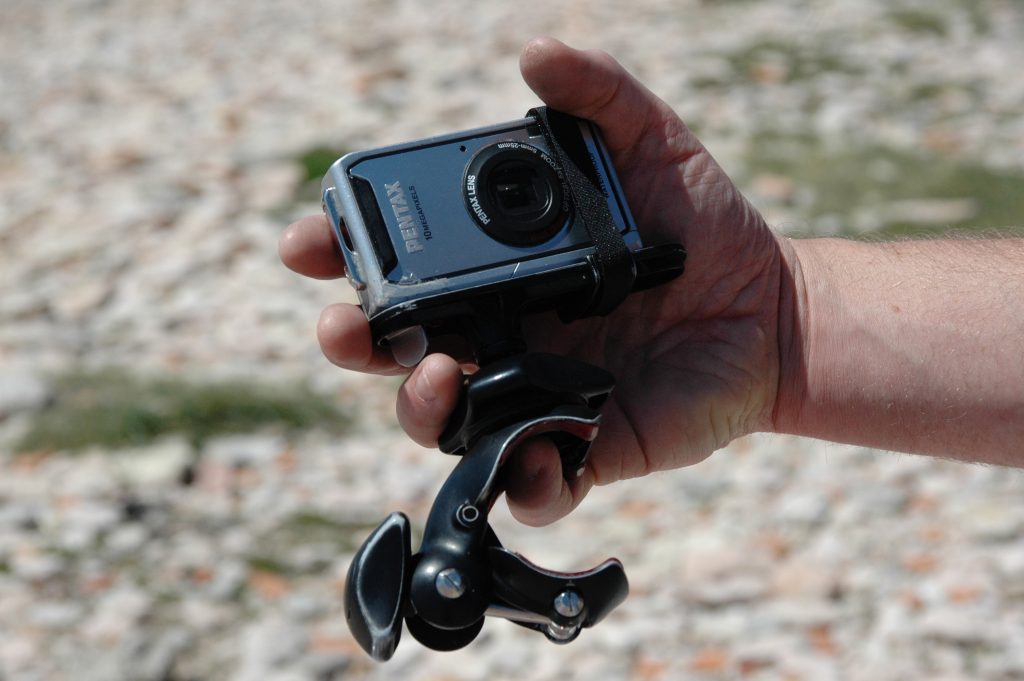
How did you fund the start-up?
We borrowed £30,000 from my parents, and my dad became our business partner. In the first year, we turned over £50,000 and it carried on from there.
Any advice or hard lessons you can pass on to other fledgling businesses?
Yes – keep going!
First products and Flymount design.
Talk us through those early Flymount designs and what the business ethos was and is.
The first commercial design looked quite different to the one that eventually went into production. Although it looked great aesthetically, it was big, and had quite a small range of adjustment. We worked hard to make it smaller, lighter, and more versatile.
Our ethos is innovation, quality and customer care. When you buy a Flymount, it’s been manufactured, assembled and checked by people who care. We stand by our products, and our customers. This won’t ever change.
How many prototypes did you go through?
We only did 2 prototypes for the Flymount Original. It was much more expensive back then. Now it can be done easily with 3D printing.
How long did it take to realise the actual for sale Flymount original?
Around 2 years.
What aspects did you pay particular attention to?
Weight and resistance to saltwater were the big ones. Then of course strength and size.
How have things evolved?
The first Flymounts were intended for use with traditional shaped compact cameras. I doubt any of our customers use these now, and all Flymounts now come with a GoPro type mounting system as standard.
We moved our manufacturing to the UK in 2013, which is much better for us, and we feel absolutely confident in the quality we can achieve here.

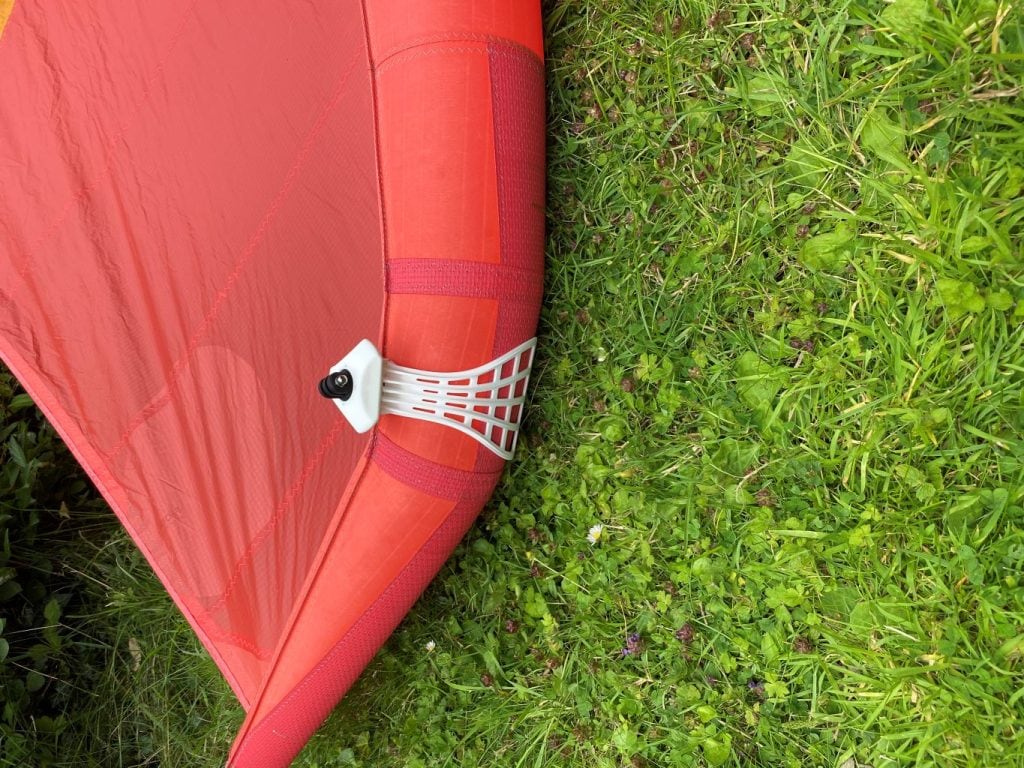
Where does Flymount sit nowadays?
Flymount has matured into a strong family business that supports us and continues to grow.
What key parts make Flymount what it is today?
Understanding the market, and making products that we would want to buy.
Was being a UK-made product a conscious decision?
The first production runs were done in China, which didn’t suit us. It seemed wrong to be manufacturing things on the other side of the planet when we had the capacity to do it here. Since establishing the manufacturing here in the UK we haven’t looked back.
How much kudos do you think that gives the brand?
It’s hard to know. It means a lot to us, and I always admire other people who choose to manufacture locally. We have the ability to make great things in this country!
What aspects do you focus mainly on as far as design is concerned?
After establishing a potential concept, there are two main things to think about: the first is functionality – making the idea work. The second is making it manufacturable – ensuring that it can be made efficiently and without waste.
It’s often possible to make something work as a 3D printed prototype, but putting it into production would be virtually impossible.

How often do you come up with new products? What does it take to bring these to market?
We often come up with new ideas, but only a few make it to market. The process of bringing a main product to market is hard, and takes a lot of work. The cost can be very high too. For example, the Aero-130 cost around £60,000 from concept to first production run.
Any other insight you can give as far as Flymount design goes?
I use software called Rhino for design work, and we use external companies for prototyping.
Where Flymount is now.
Talk us through the Flymount business set up right at this moment. Who are the team and how does it all gel together?
Flymount is me, my wife Imogen, and my dad, Chris. We all work together well.
What’s an average day at Flymount HQ look like?
Chris tends to get into the office early and do the orders, and then Imogen and I come in after our son has gone to school. We live close by and can go home for lunch. Our daughter’s homeschooled, so she comes in too, and gets on with her work. If there’s any wind I might go for a sail in the afternoon.
Talk us through the process of getting Flymount products into the warehouse.
Production happens up the road in a town called Oakham. The injection moulded parts are delivered to our office where we check or assemble them, then we ship EU stock out to a partner in The Netherlands. The rest is shipped out from here.
We’re moving towards having everything done in Oakham, so that we don’t have to handle the stock, but at the moment we still like to check everything.
Which parts of the world do you ship orders to?
All parts! We ship orders to customers all over the world.
What’s your biggest selling Flymount product?
Currently the Aero-130 kite and wing mount.
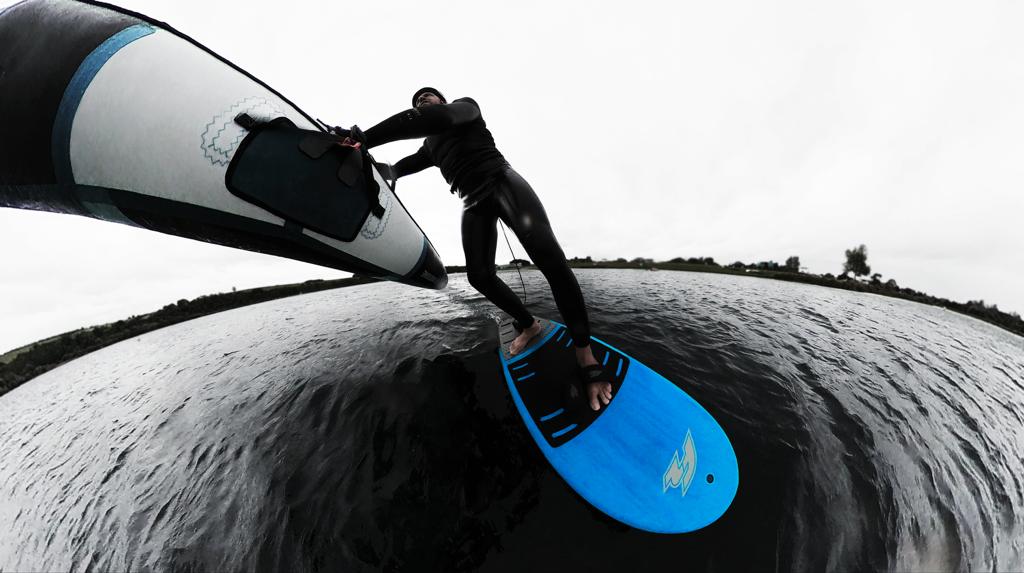
Watersports today.
Do you still get time on the water?
I still manage to get out quite a bit.
What’s your go-to discipline and why?
I mostly wing at the moment. We live in the Midlands, and my nearest place to sail is a lake. The wind’s often inconsistent, and not particularly strong, so winging makes more sense for me. I really enjoy winging as a sport, and feel excited about the way it’s moving.
Where do you normally sail/ride?
Notts County Sailing Club.
How has this evolved from the early days?
Not very much! I’m back where I started.
Where do you see the biggest growth, in terms of sport discipline?
It feels like winging is the fastest-growing discipline at the moment. I think it’ll stay like that for a while. Hopefully, it’ll become increasingly accessible as more second-hand equipment comes onto the market.

And what about products Flymount will be compatible with? Are you spotting anything from action cam brands you’ll be able to jump on?
We focus more on the equipment the cameras attach to than the cameras themselves, but a really small 360º camera would be an amazing product – perhaps this will be something that will happen over the next year or two. We have a nice concept in the pipeline that would be ideal with something like that.
Ultimately, what’s the goal you have in mind for Flymount?
To steadily grow, and stay in business. We’re a lifestyle business rather than a corporate machine, and that’s the way we intend it to stay.
And what about your personal situation? Any particular goals in mind?
We’re trying to get planning permission to build an off-grid home. That’s the main goal at the moment.
What’s the legacy of Flymount you’d like to leave behind?
If we’ve helped anyone to preserve the memory of a great session, that seems like a perfect legacy to me.

General observations from the world of watersports and action sports.
How do you see windsurfing these days?
I see it as the amazing, vibrant, multifaceted sport that it always has been. It’s great to see young people still getting into it.
And what about wing foiling? Would you consider this to be the up and coming watersports discipline?
It seems that way! I think there’s still lots of growth in the sport.
Is there any other activity you feel has lots more potential to give?
I think non-inflatable wings have growth potential, especially for racing.
What about something new? Eyeing up anything we should be aware of?
We’re working on a really nice extension system at the moment. It’ll allow cameras to be positioned quite a distance away from the kit without being vulnerable.
Final thoughts regarding Flymount, water sports, or action sports?
We do these sports because of the way it makes us feel. Filming a session is a way of reliving that moment, and making it last a bit longer. I love that we’re part of that.
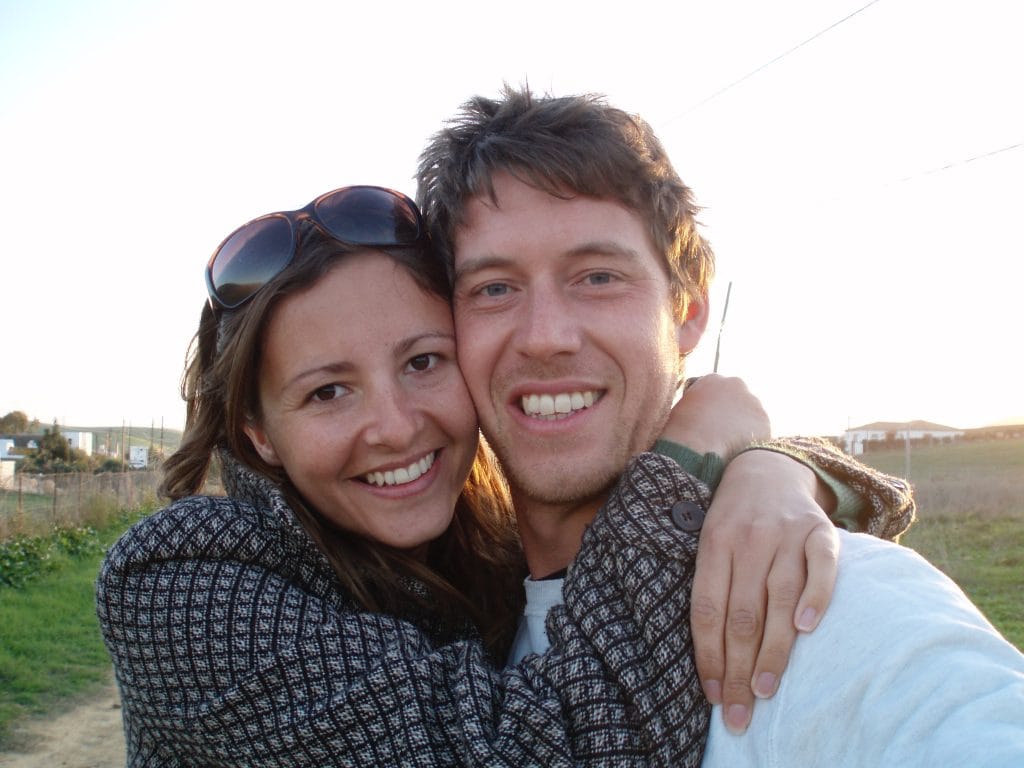
Imogen’s story.
When did you first meet Joe and where?
I met Joe in the spring of 2006. I’d just had an amazing time backpacking around Morocco with a friend and we were near the end of our trip. Our flight home was from Seville so our plan was to get the ferry over to Tarifa from Tangiers, then catch a bus to Seville that same day. But Morocco was so irresistible, it was hard to leave and we ended up catching a late ferry and missing the last bus to Seville! We were gutted. I’d been excited about a night out in Seville and now we were stuck in Tarifa. We checked ourselves into Hostel Africa and ventured up to the roof terrace. I couldn’t believe the view! The sun was setting and we could see Africa over the rooftops. It was unexpectedly stunning. That evening we discovered a little bar called La Tribu in the old town and drank mojitos and chatted about our trip. We were just about to leave when in walked Joe with a group of friends.

Were you windsurfing at the time?
I was not a windsurfer when I met Joe but admired how he was dedicating his life to something he loved. I was living in London at the time and felt envious of his amazing life in Tarifa!
What did you think about the sport?
I don’t think I’d realised how dynamic windsurfing is, until meeting someone so passionate about it. Joe would play windsurf dvds over and over and I soon became familiar with the big names in the sport and what was possible.
Any funny windsurfing stories as a couple from back in the day?
Joe was obviously very keen that I learn to windsurf. We’d made the decision to live together quite early on in the relationship and I took no persuading to move from London to Tarifa. Although we both worked, we also had lots of time and so we bought a board and sail for learning. Joe taught me the basics at the lagoon at Punta Paloma. One of those days he took me to Bolonia where I could see huge rolling waves and I thought no way! He assured me that it was calm ‘out the back’ and a perfect spot for learning. Against my better judgment, I paddled out, struggling to get through the waves, pretty terrified if I’m honest. “Just hold on” (to the board) Joe shouted but I was already tumbling, totally out of control and unable to stay above water. I managed to get back to the shore while Joe rescued the equipment. It was almost a divorce I can tell you!

What were your thoughts about the Flymount product idea initially?
Joe and his friends had been Gaffa taping their cameras to their equipment for some time, desperate to see their progression on the water. The Flymount product was a no brainer – why didn’t it exist already? We dreamt about having our own business, which would allow us to keep travelling and having adventures. The was perhaps slightly naive as running your own business requires so many sacrifices. But we were young and had the energy to push something forward.
Anything interesting you can remember from those first few Flymount prototype sessions?
Everyone would crowd round to see the footage and it would often attract attention at the beach. It was exciting to see the interest it was creating.
When did you think Flymount might actually become a thing and why?
Once the final prototype had been tested – we knew! The product looked and felt great, we were so proud of it. We had lots of people testing it and everyone was so positive.

At what point did you become part of the Flymount business proper?
At the start of the business, it was just Joe and I. So I was a part of the journey from the beginning. By the time the first Flymount original was launched to market I’d had our first child, so took a step back. My focus has always been on our little family and what’s best for us. This has included times when I am focused on the business and times when I have focused on our children. This is the wonderful thing about running your own business, as it affords this freedom.
What input do you have with product design?
I had some input in the branding but I am not involved with the design of the product. That is definitely Joe’s area.
Talk us through your role within Flymount.
Currently, I am the one on social media promoting the products and chatting to our wonderful customers. I absolutely love scrolling through all the colourful imagery and feel very lucky to be inspired by beautiful photos and reels every day.
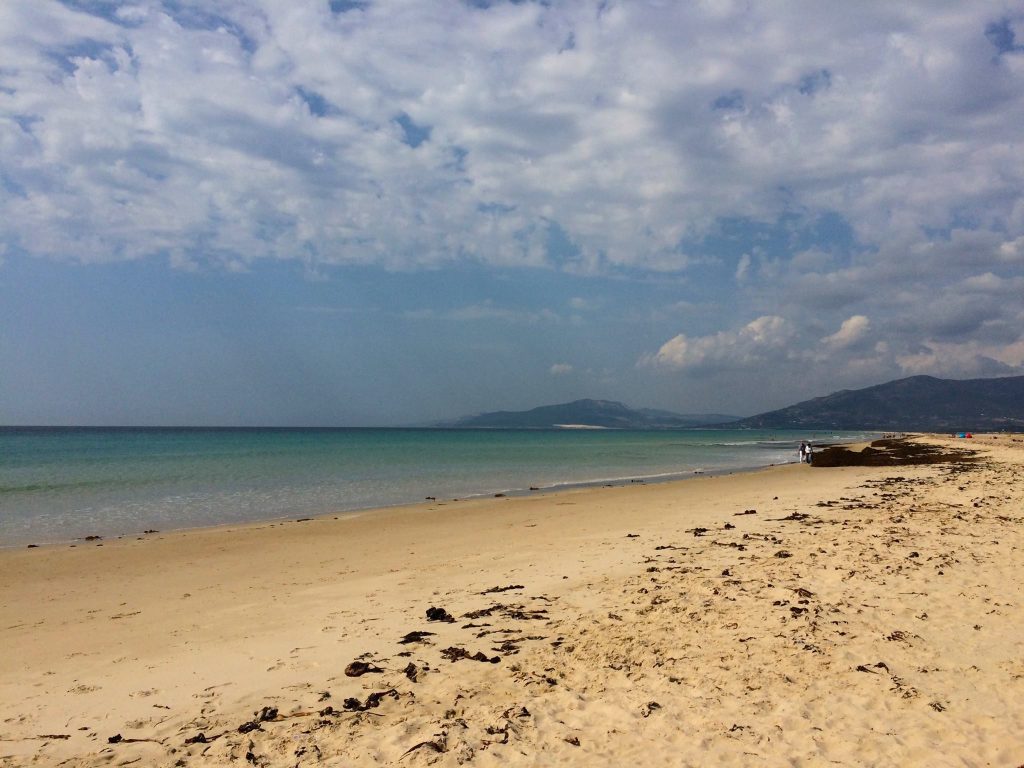
What’s one of your proudest Flymount moments and why?
I think we’d always had the dream of seeing people (we didn’t know) using the mounts in different places around the world. There’s something really exciting about seeing your product being used by a stranger at the same beach you are at! We used to say “imagine seeing people using Flymount in Tarifa!” Now we are used to it and mostly expect it. But I know that Joe feels particularly proud when he sees his childhood heroes like Robbie Naish using the mounts.
What’s your favourite kind of Flymount shot and why?
For me, I love the shots that capture a person’s expression. That moment of pure joy or terror is priceless!

How would you like to see the brand evolve?
Certainly, we hope that Flymount continues to grow and lead the market in this area. There are lots more products up Joe’s sleeve!
Thanks and praise.
Obviously, we wouldn’t be where we are today without our customers. We are so lucky to have many talented riders who use our products to showcase what’s possible with these exciting sports.
Find out more about Flymount here.
Don’t forget to check out more Flymount articles here. And for the full history of windsurfing this article is a good place to start.


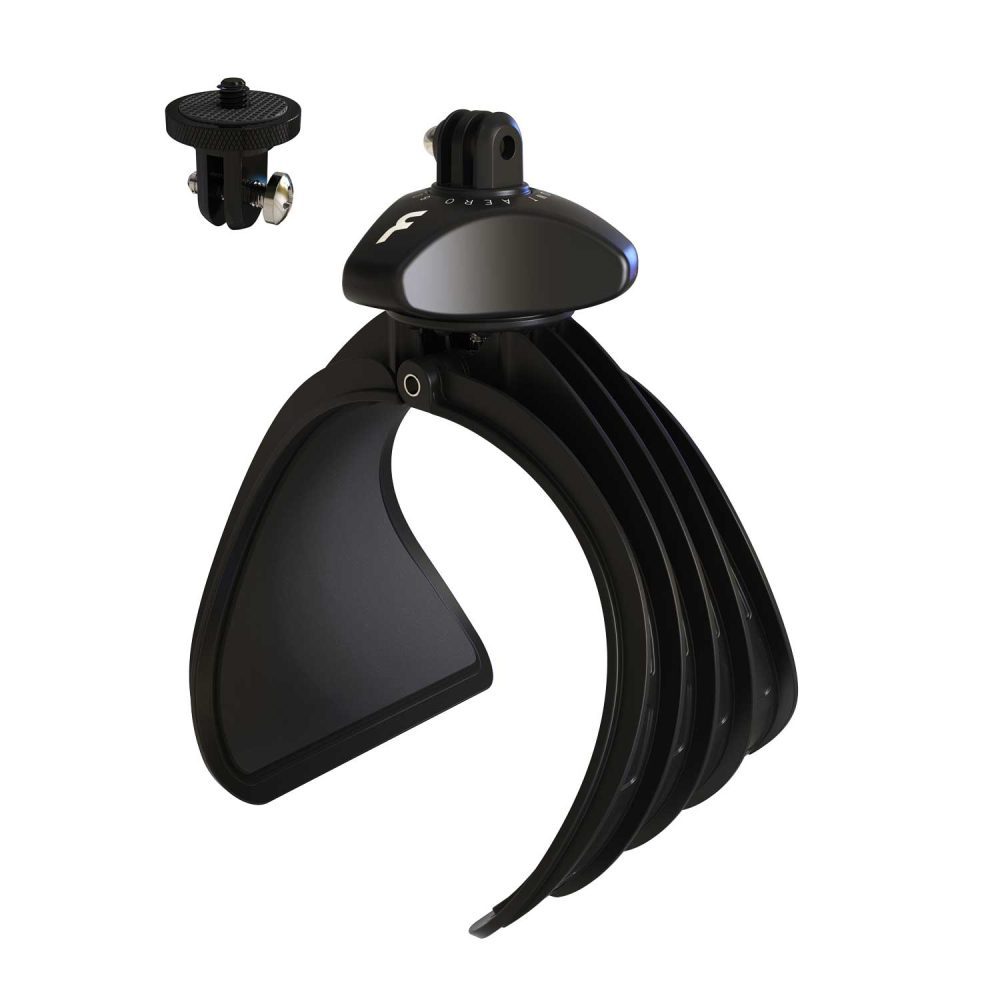

Recent Comments